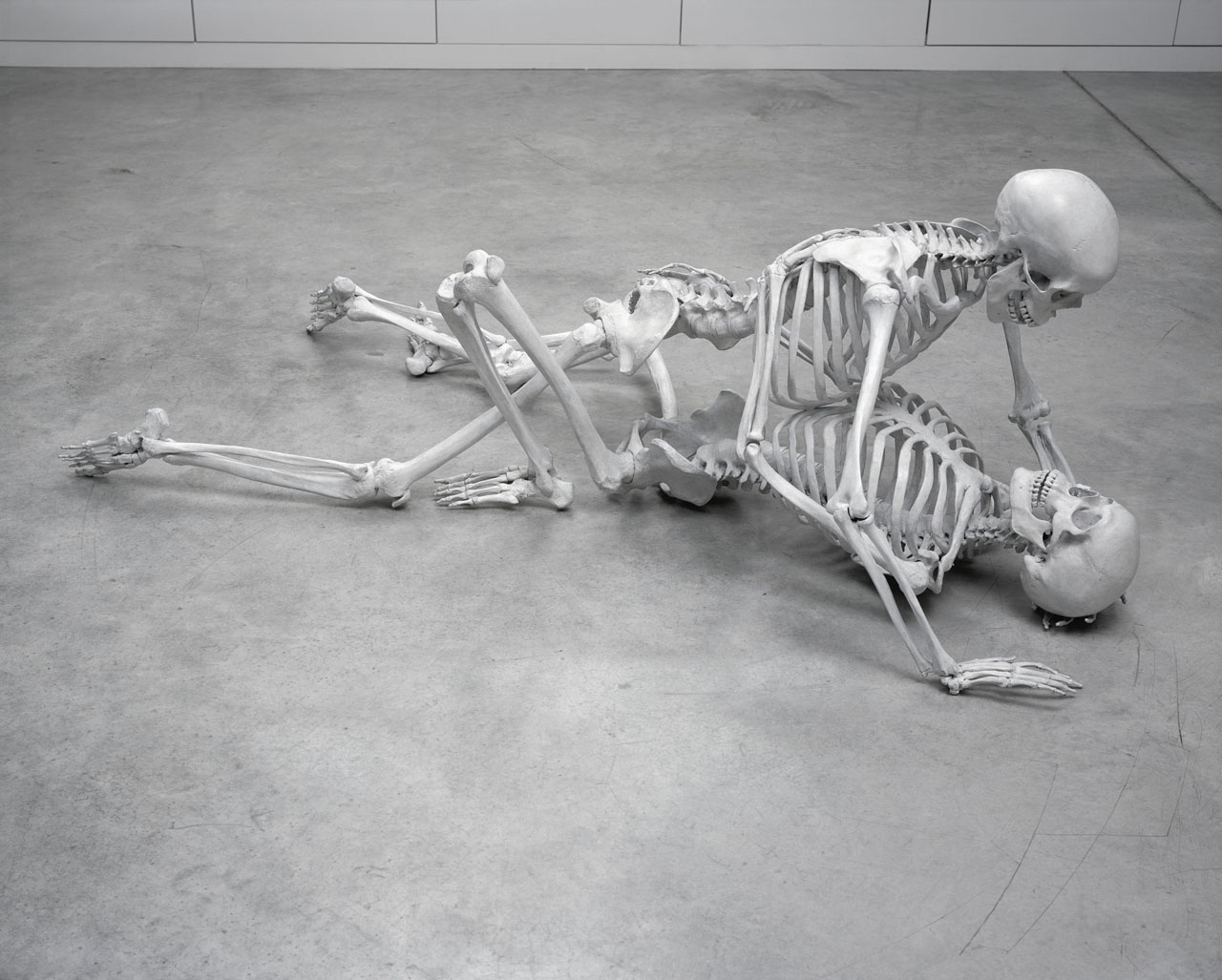
Foundation
Marc Quinn
October 5 → January 6, 2008
Gathering over forty recent works, DHC/ART’s inaugural exhibition by conceptual artist Marc Quinn is the largest ever mounted in North America and the artist’s first solo show in Canada
The PHI Foundation presents, in collaboration with Productions Onishka and the Centre du Théâtre d’Aujourd’hui (CTD’A), the soundwalk Marguerite: la pierre.
This article is a reflection on the experience of the soundwalk Marguerite: la pierre. Conceived by artist Émilie Monnet, Marguerite: la pierre retraces the life of Marguerite Duplessis, the first person to be enslaved and the first Indigenous person to have subsequently fought legally for her freedom in New France. On May 7, twenty participants gathered at the PHI Foundation in the company of Émilie Monnet and her invited guest, Mélanie O’Bomsawin, to do the soundwalk together.
Duplessis once lived in Old Montréal, a neighbourhood built from stones that was founded by French settlers in the 17th century. Indigenous knowledge suggests that stones are our oldest ancestors and thus bear the stories of the land. Within this context, we walked through the streets where Duplessis lived, confronting the dark histories that are held within the stone facades. The walk was followed by commentary from Monnet and O’Bomsawin, who has explored the memory of stones in her multidisciplinary artwork.
There is an idea around the history of colonization that Canadians were “good colonizers,” suggesting that our history in Canada was not as violent as it was in the United States. While there is a well-documented history of slavery in the United States, most Canadians do not know that slavery existed in New France from 1629 to 1833. This comes as no surprise, considering this aspect of history is rarely mentioned in school curricula. In fact, there were often specific efforts to obscure this history. For instance, the English translation of Québec historian Marcel Trudel’s L’esclavage au Canada français, which caused a scandal when it was first published in 1960, was delayed by fifty years. [1]
According to Trudel, Québec’s enslaved people were approximately two-thirds Indigenous. Black slaves cost about double. Slaves were seen as a symbol of status and were more often domestic servants in the city than field labourers in the country.
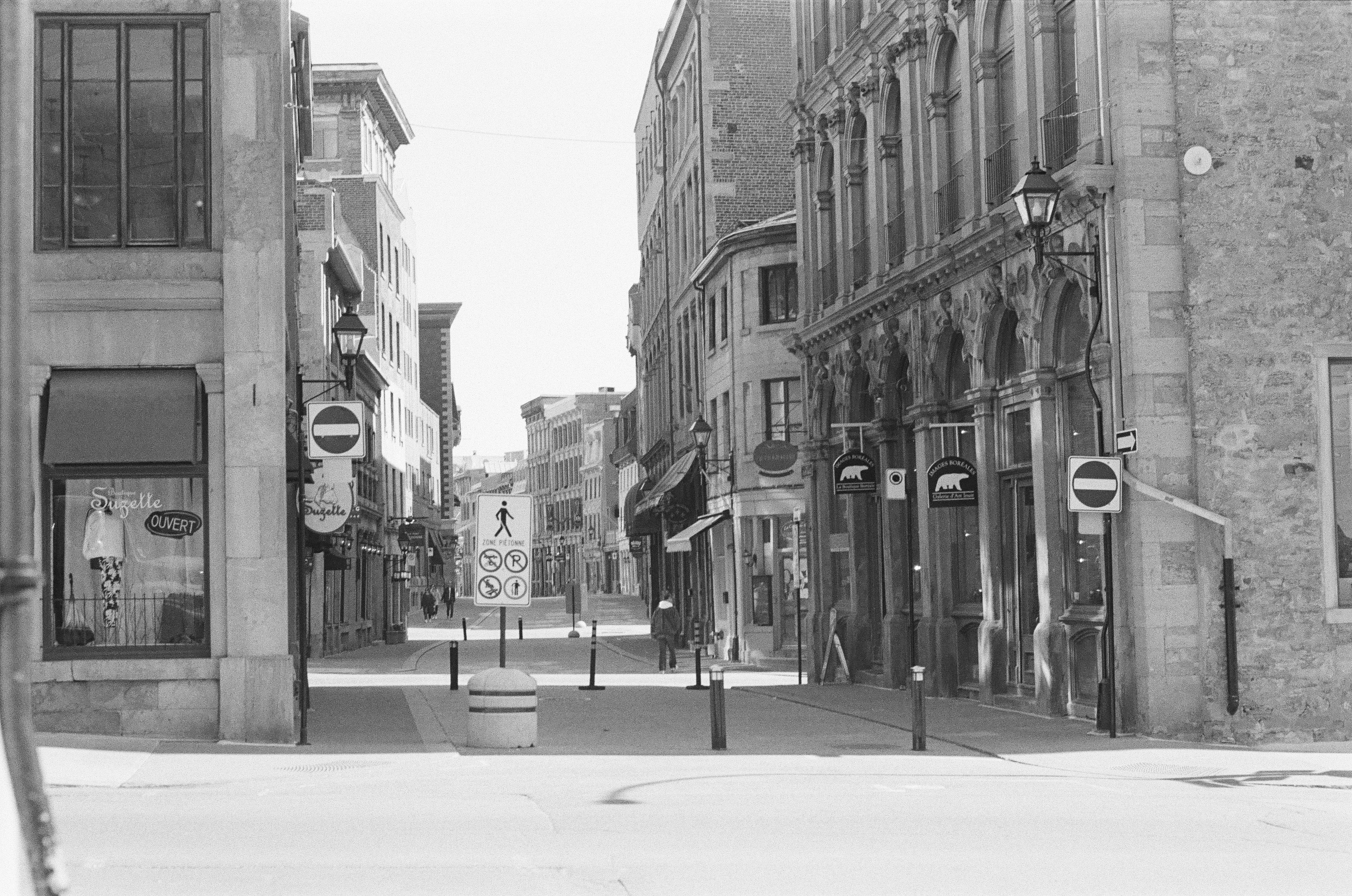
In Old Montréal, which was an epicentre of the slave trade in Québec, traces of a violent past are today camouflaged by tourist shops, restaurants, and hotels. Émilie Monnet’s soundwalk brings this history to light in her rigorous project with many collaborators, resurrecting the spirit of Marguerite Duplessis.
The soundwalk reflected on the environmental history of the land, explaining that eighty percent of rivers that originally ran through the Island of Montréal, then known as Hochelaga, are now buried under centuries of urban development. Monnet and O’Bomsawin reflected on how stones are our oldest ancestors and knowledge keepers, thus the history of colonialism and the slave trade live on in Old Montréal’s cobblestone streets and stone facades. The Anishinaabemowin word for stone is “mushum,” which is the same word for “grandfather.” This notion emphasizes the importance of recognizing how stories and wisdom are embedded in the materiality of the land.
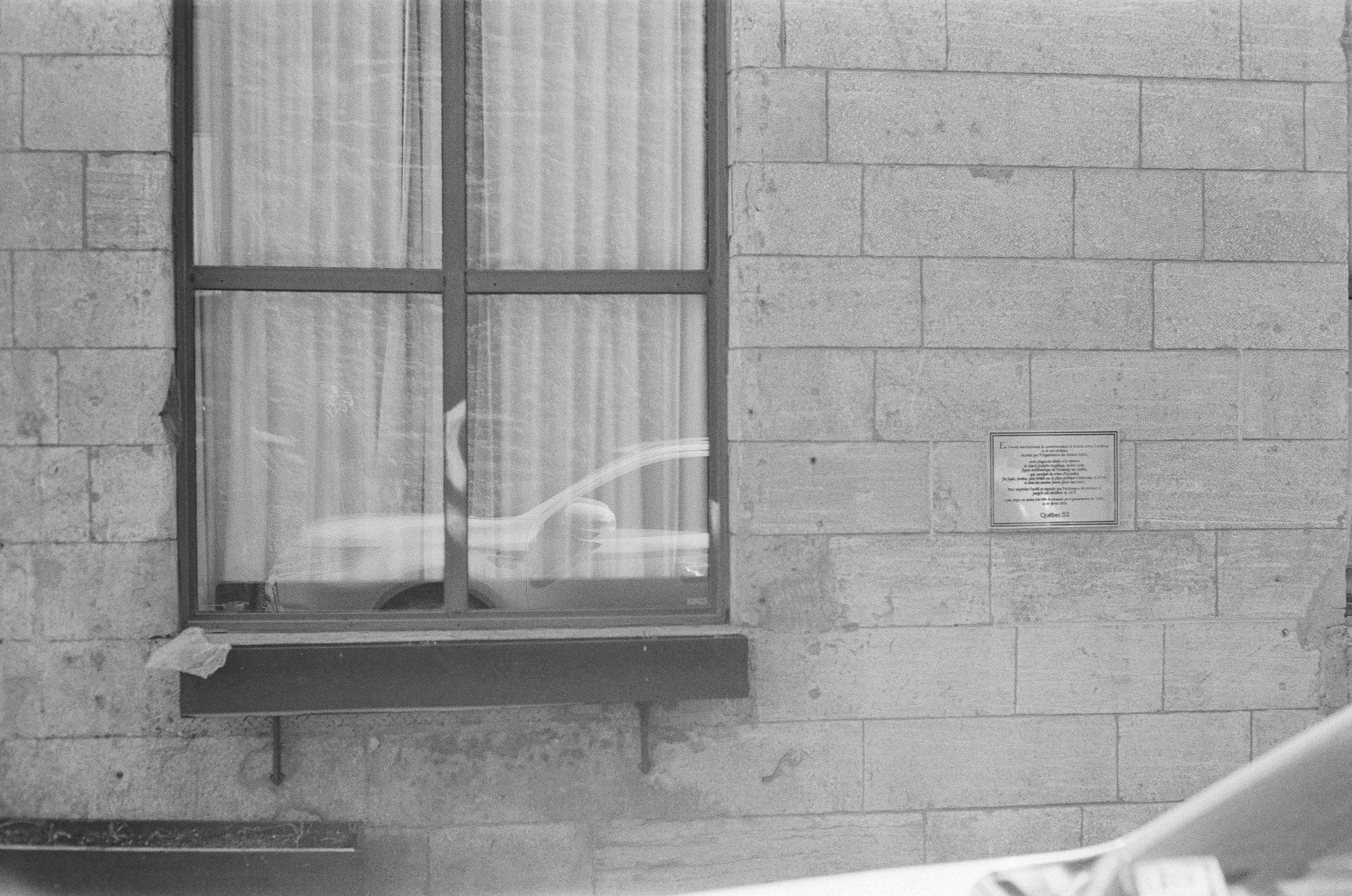
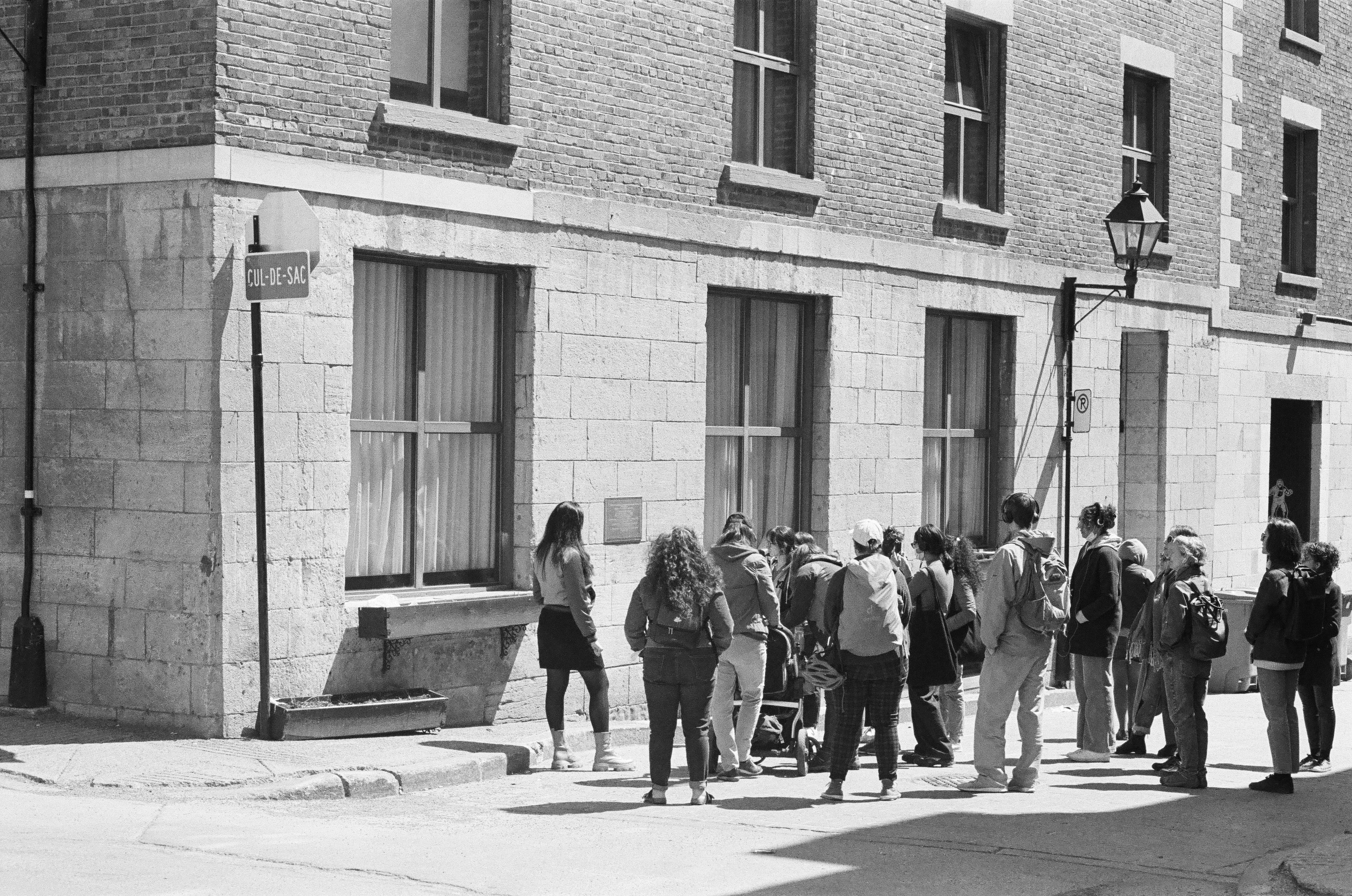
While walking through Old Montréal, now one of the city’s most prized tourist attractions, we were presented with a stark juxtaposition. The soundwalk conjured images of a story concealed by centuries of colonization. As we walked along Saint-Paul Street towards the location where Duplessis lived, the overwhelming smell of eucalyptus emanated from an elegant hotel. We passed tourists and business people eating sandwiches and sipping sangria, others taking photos of old buildings on their smartphones. Through no fault of their own, they are oblivious because the history of this place is disguised.
At Place d’Youville, a stone monument stands about 25-feet-tall, celebrating early settlers. Meanwhile, Old Montréal’s sole record of Marie-Joseph Angélique and the abolition of slavery in Québec is a one-foot wide bronze plaque inaccessibly placed on Vaudreuil Street next to some garbage cans. Angélique was an enslaved Black woman who was tortured and executed after being accused of setting fire to her owner’s home. The soundwalk experience was both enlightening and heartbreaking in every way.
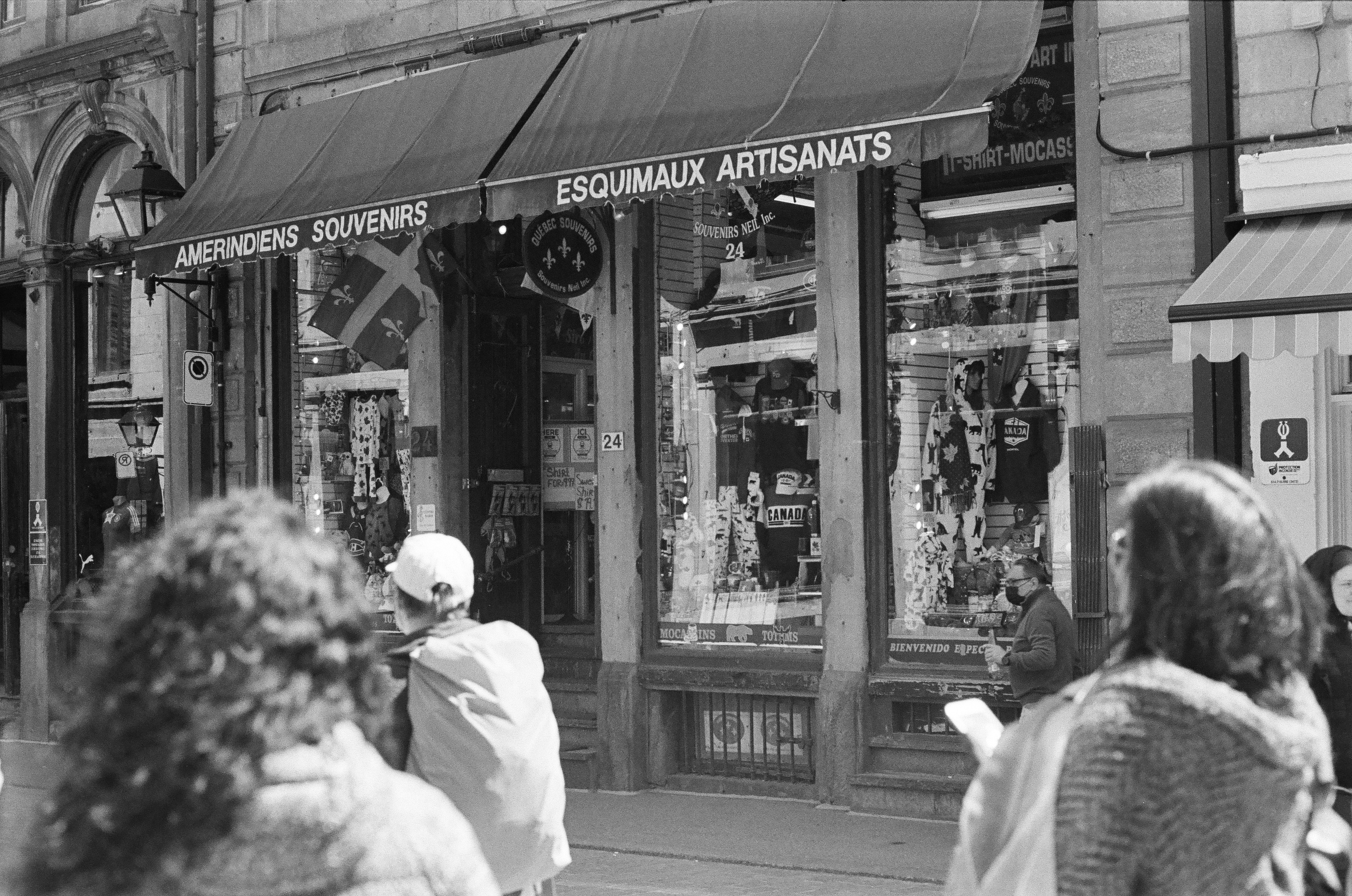
An incredible amount of work went into Émilie Monnet’s project to be able to share Marguerite Duplessis’s story of fighting for her freedom from slavery in New France. With the recent Canadian launch of the UNESCO International Decade of Indigenous Languages, and with June being National Indigenous History Month, this soundwalk arrives at a perfect time for Montréalers to reflect on the languages and histories that permeate the land. In the context of decolonization, settler-scholar Paulette Regan declared in her article Unsettling the Settler Within, “As members of the dominant culture, we have to be willing to be uncomfortable, to be disquieted at a disturbing level - and to understand our own history, if we are to transform our colonial relationship with Indigenous peoples.” [2]
Monnet’s three-part project is emblematic of a larger story of slavery and injustice in Canadian history. Starting at the PHI Foundation at 451 Saint-Jean Street, the soundwalk can be streamed online on your device at any time until October 30, 2022.
[1] Neale McDevitt. “The untold story of slavery in Canada and Montreal,” McGill Reporter (2017), https://reporter.mcgill.ca/the-untold-story-of-slavery-in-canada-and-montreal/.
[2] Paulette Regan, “A Transformative Framework for Decolonizing Canada: A Non-Indigenous Approach,” paper presented at Indigenous Governance (IGOV) Doctoral Student Symposium (University of Victoria, Canada), 52.
Author: Zoe Compton
Zoe Compton is an educator and project manager at the PHI Foundation for Contemporary Art. An artist, environmentalist, and educator, Zoe holds a double bachelor’s degree in Environmental Studies and Fine Arts from Bishop’s University, and a master’s degree in Art Education from Concordia University. Her teaching philosophy is grounded in promoting environmental awareness and accessibility, which she puts to practice at the Visual Arts Centre, the Point-Saint-Charles Art School, and in other community settings. She also works as a Communications Coordinator for the Canadian UNESCO Chairs Network, providing support to chairholders in their work towards the United Nations’ Sustainable Development Goals.

Foundation
Gathering over forty recent works, DHC/ART’s inaugural exhibition by conceptual artist Marc Quinn is the largest ever mounted in North America and the artist’s first solo show in Canada
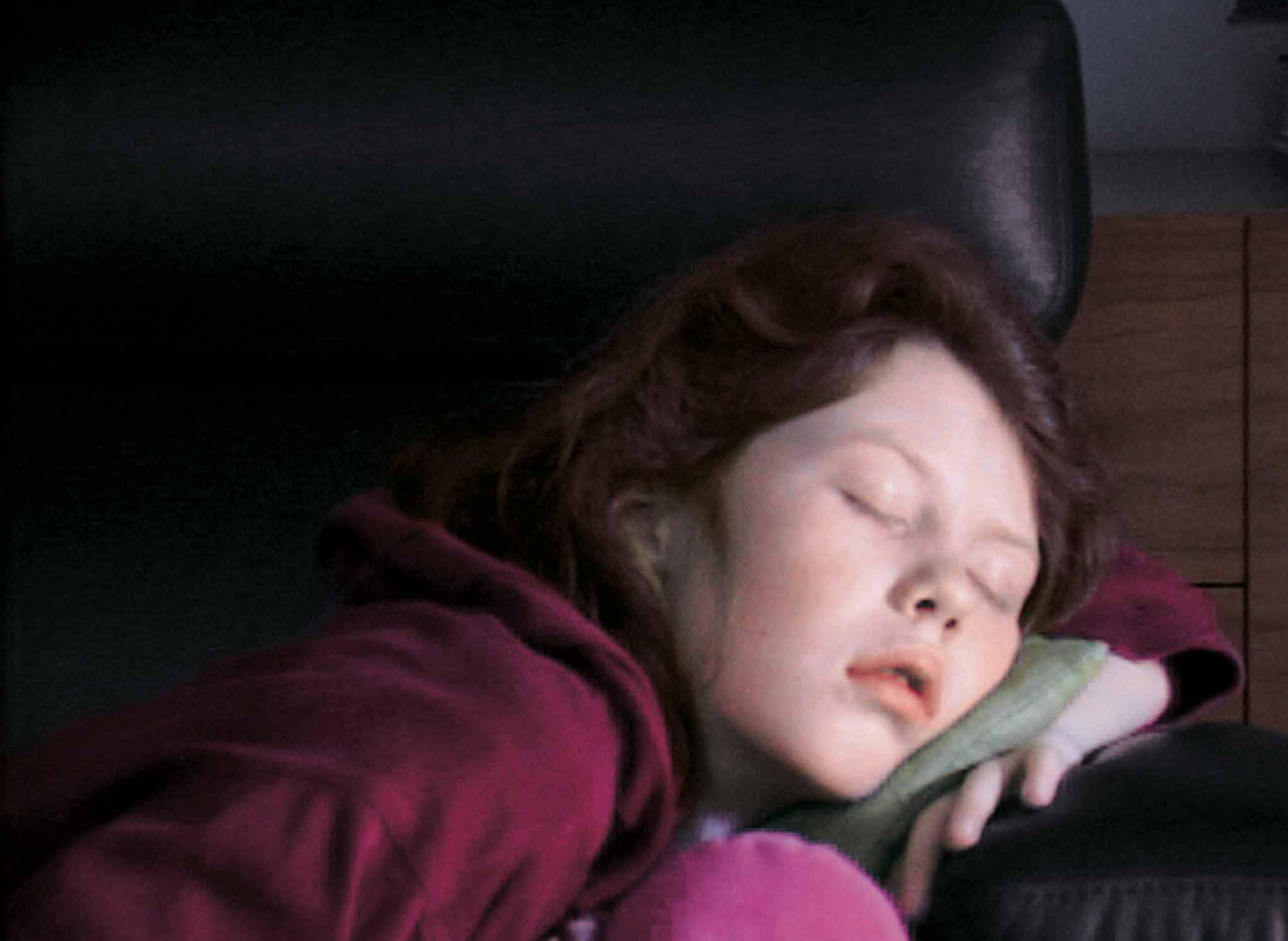
Foundation
Six artists present works that in some way critically re-stage films, media spectacles, popular culture and, in one case, private moments of daily life
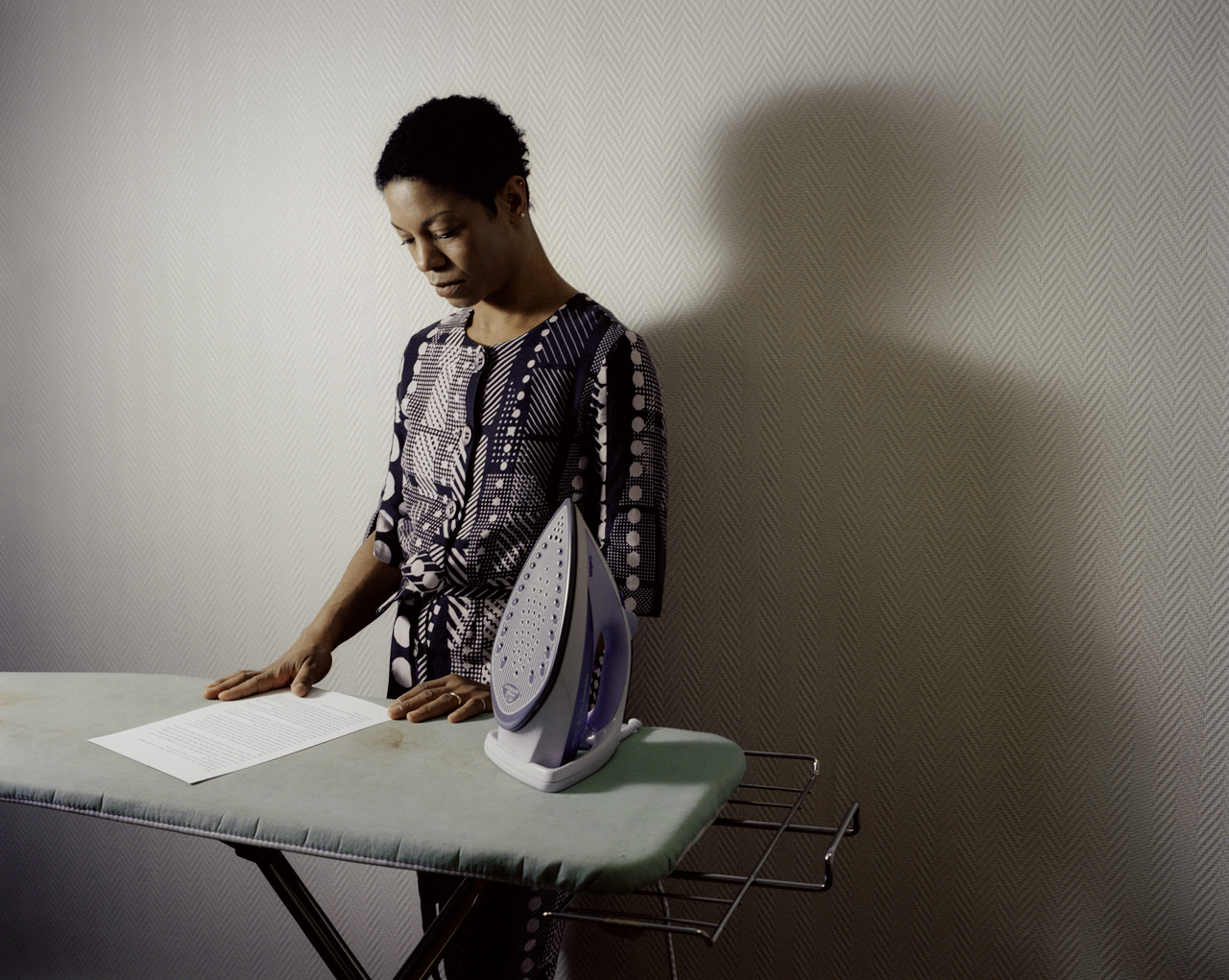
Foundation
This poetic and often touching project speaks to us all about our relation to the loved one

Foundation
DHC/ART Foundation for Contemporary Art is pleased to present the North American premiere of Christian Marclay’s Replay, a major exhibition gathering works in video by the internationally acclaimed artist
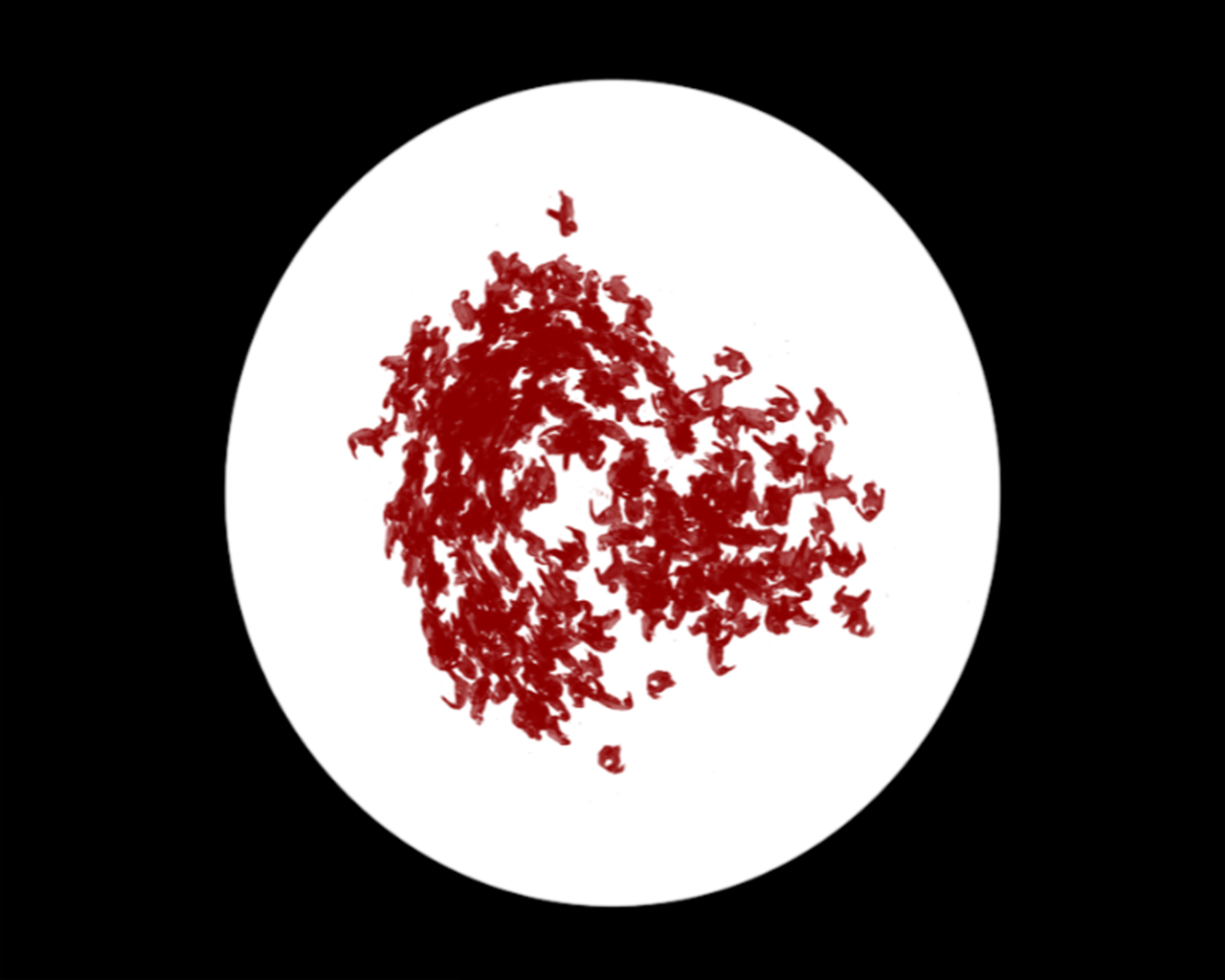
Foundation
DHC/ART is pleased to present Particles of Reality, the first solo exhibition in Canada of the celebrated Israeli artist Michal Rovner, who divides her time between New York City and a farm in Israel

Foundation
The inaugural DHC Session exhibition, Living Time, brings together selected documentation of renowned Taiwanese-American performance artist Tehching Hsieh’s One Year Performances and the films of young Dutch artist, Guido van der Werve
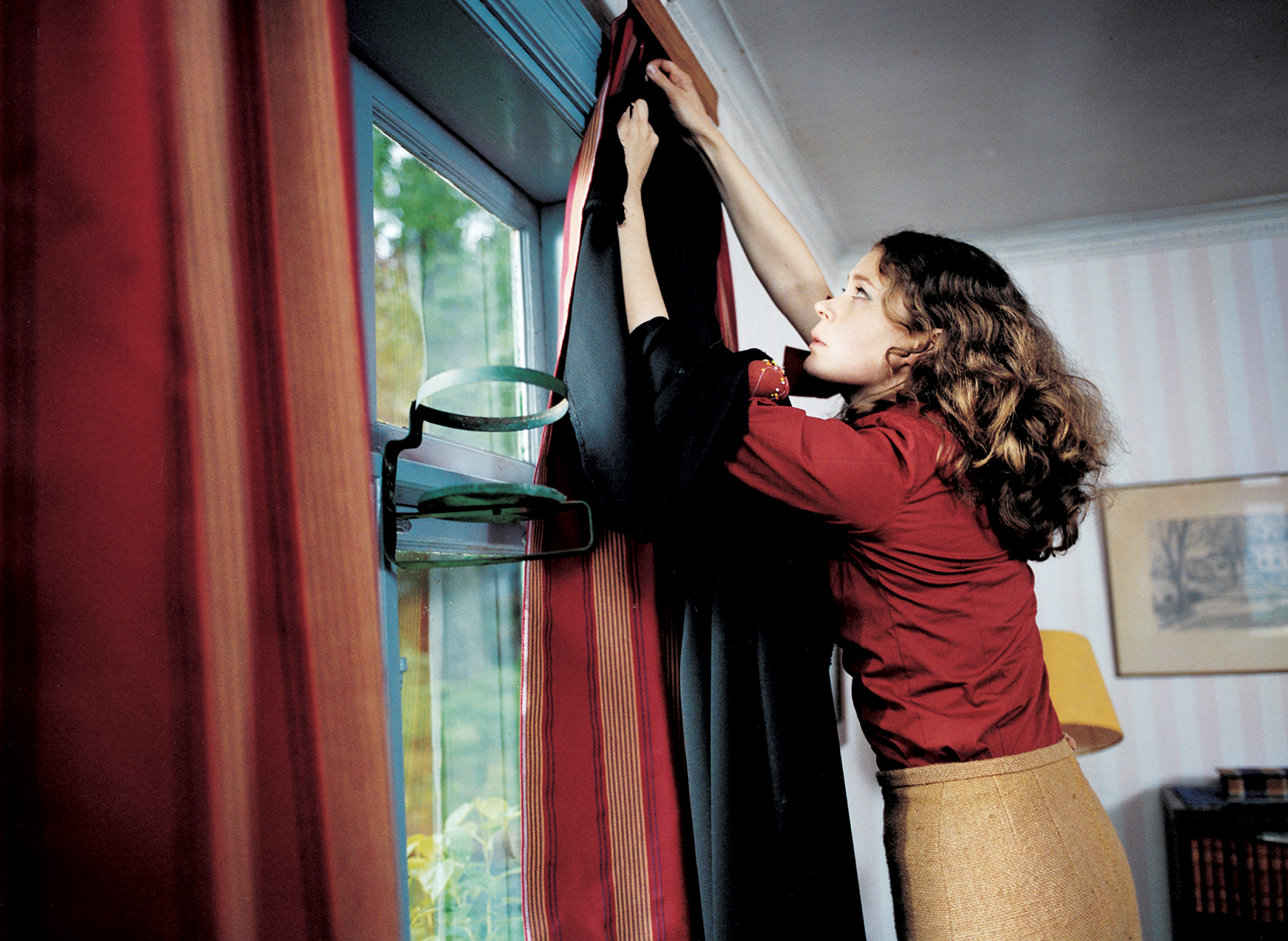
Foundation
Eija-Liisa Ahtila’s film installations experiment with narrative storytelling, creating extraordinary tales out of ordinary human experiences

Foundation
For more than thirty years, Jenny Holzer’s work has paired text and installation to examine personal and social realities